My long-held belief that Malheur Wildlife Refuge is Sacred Ground was reinforced by my early morning trip to a Sage Grouse Lek on my last day there. Ever since I began telling birders that Malheur is one of my favorite birding destinations, they have asked me if I’ve visited the Lek. I haven’t largely because getting up at 3:30 AM is pretty brutal for me and because I was never convinced that I would be able to find the Lek in the dark in the middle of the desert. In fact, I didn’t think I would visit this year either until I met Mark in the campground and he asked me if I was going there. Mark had been birding for forty years and knew where the Lek was. I told him my reservations and he told me he knew where it was but he wasn’t sure his Prius could handle the back roads. So we agreed to go in my truck at 4:00 AM.
Even with his experience we ended up slightly off, probably because there had been a major fire two years ago and the Sage Grouse had relocated slightly. Luckily, a ranger drove a ways past where we were waiting, spotted the grouse and backed up and directed us to where they were.
There was something “magical” about watching male Sage Grouse emerge from the darkness one by one and begin to perform their dance. All I could see with the naked eye was the white ruff around the neck at first. As it turns out, the magic of RAW shots and Photoshop makes the bird actually appear clearer than it did in the early morning light.
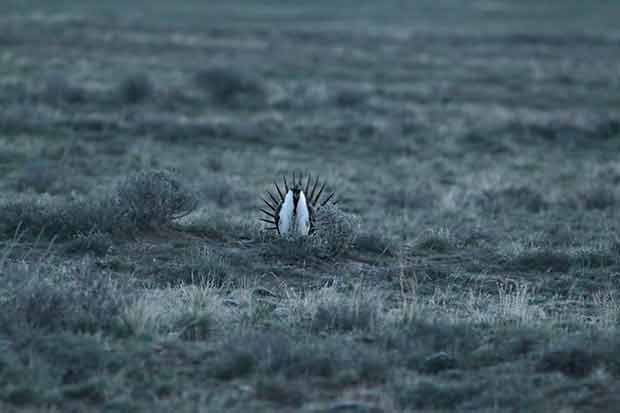
Since I had to shoot at an ISO of 3200, I had to use a plug-in to remove some of the noise from the shot. I could have adjusted the colors, too, but I wanted the shots to remain as true to life as possible.
Luckily, the grouse actually moved closer as the light increased, making better and better shots possible as the morning went on, though none of mine approach the quality of some I’ve found on the internet. They are, to say the least, fascinating birds with their huge fan-shaped tails, their white ruffs, and their bright yellow air sacks they inflate to attract females.
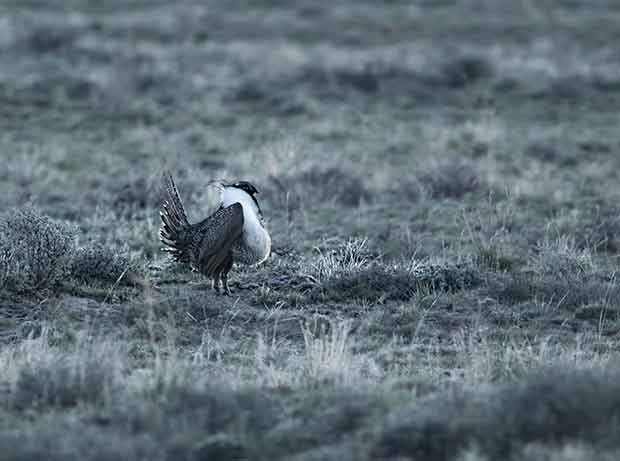
There were five or six males displaying on the Lek
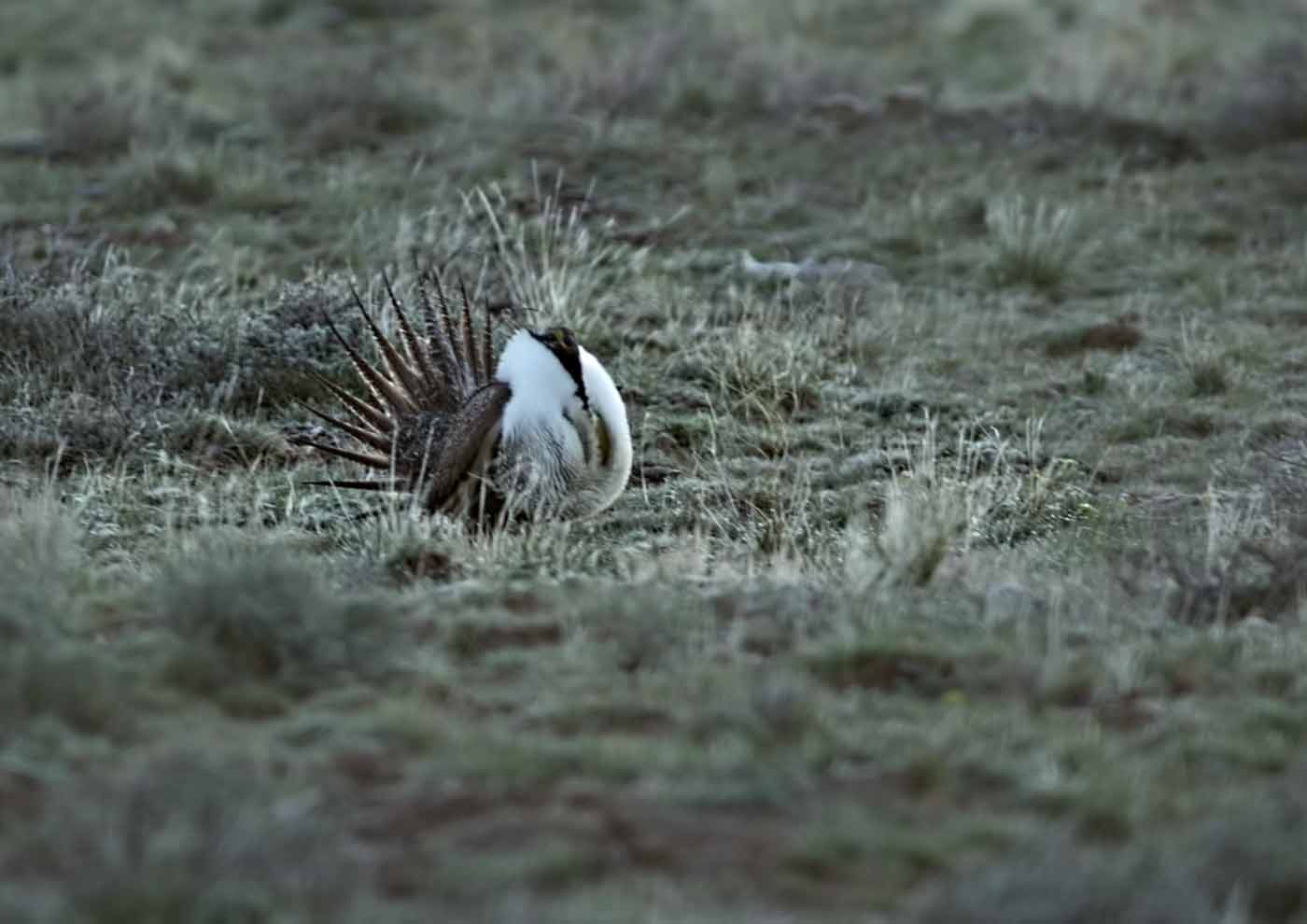
and several female Sage Grouse ran across the Lek throughout the performance.
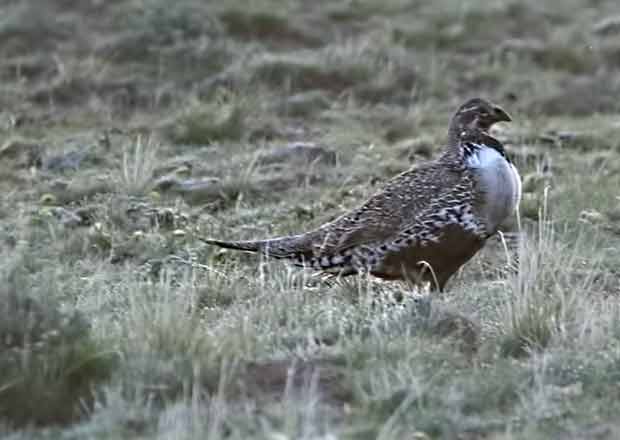
Time passed rapidly sitting there listening to their odd, thunking calls and before long it was sunrise, which made photographs much easer to get, though it still wasn’t ideal conditions because the sun was behind them. What it did do, though, was give a wonderful glow to those brilliant tail feathers
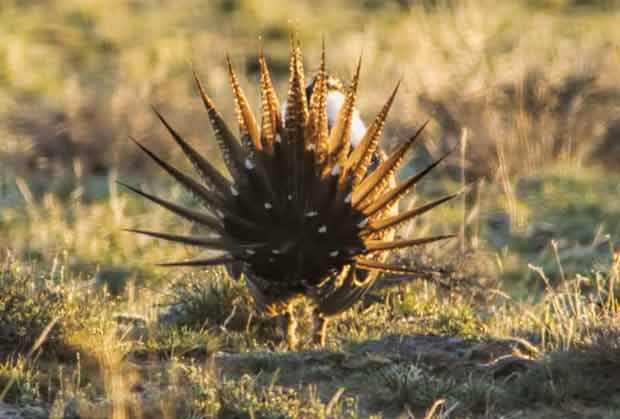
and those large, yellow air sacks that produced those haunting calls.
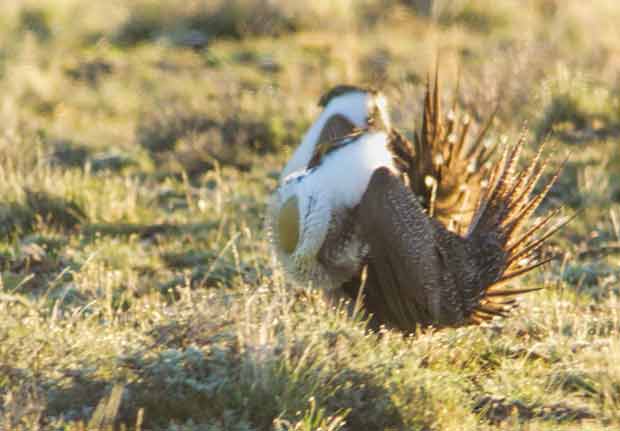
I’m already looking forward to next year’s trip to the Lek, or, perhaps, to other Leks. Until then, I’ll have to be satisfied with this shot.
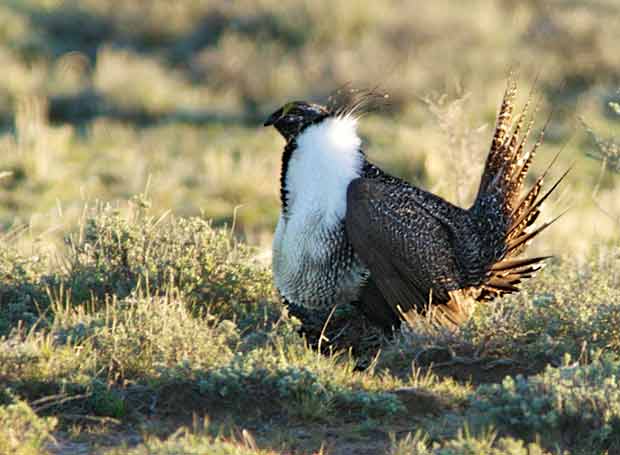
If you ever get the chance to visit a Lek, don’t wait like I did; it’s a once-in-a-lifetime opportunity.
